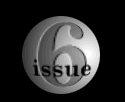But as the war years wore on, Hollywood turned to new, less optimistic material. With The Ox-Bow Incident, a powerful attack on lynch parties, social themes came to the Western. And with Howard Hughes' The Outlaw, a censorship storm erupted over the movie's sexual content. A Maryland judge who banned the film described Jane Russell's breasts as hanging over the picture "like a thunderstorm spread over a landscape." Posters advertised "Action! Thrills!! Sensations!!! Primitive Love!!!!" Duel in the Sun followed in a similar vein. As David O. Selznick's attempt to create a Western version of Gone With the Wind, Duel in the Sun provided a sweaty eroticism, painted in throbbing tones of red and orange by director King Vidor and cinematographer Lee Garmes. It's a tale of mad, sadistic love told between cracks of thunder and evangelistic sermons. Critics simply labeled it "Lust in the Dust."
After the end of WWII as the House of Un-American Activities scoured Hollywood for communists, a darker vision of human nature took root in Hollywood, Westerns assumed a sharper, more violent demeanor, resulting in the luridly, Freudian Pursued and the film noir-ish Blood On the Moon. In Pursued (1947), the hero (Robert Mitchum) experiences flashbacks on his traumatic childhood, and in Blood On the Moon (1948) director Robert Wise and cinematographer Nicholas Musuraca created a clastrophic world drenched in shadows and brimming with violence.
 | John Wayne and Montgomery Clift duke it out in Howard Hawks' Red River.
[click photo for larger version] |
As America's interest in psychology grew, Western heroes and villains continued to grow in complexity until they weren't that easy to tell apart anymore. Howard Hawks's Red River is a classic movie from this period. John Wayne plays Tom Dunson, a tough authoritarian cattle rancher who barks out orders and refuses to take anyone's advice. After his adopted son (played by Montgomery Clift) takes control of a cattle drive away from him, Dunson becomes insane with anger and leads a posse of hired thugs to retake the cattle drive. Red River is a stunning Western, filled with brilliant characterizations and powered by a taut, unnerving tension as Wayne and Clift struggle for control of the herd.
 | Henry Fonda as Wyatt Earp in John Ford's My Darling Clementine.
[click photo for larger version] |
Optimism hadn't completely disappeared from the Western after WWII, as evidenced by the work of John Ford. His My Darling Clementine (1946) builds relentlessly toward the Gunfight at the OK Corral (with Henry Fonda as Wyatt Earp, Victor Mature as Doc Holliday, and Walter Brennan as Old Man Clanton), but the movie's overwhelming concern is the effect of civilization on the frontier, which Ford paints in wholly positive terms (as embodied by the sweet innocence of Cathy Downs as Clementine). But even Ford wasn't completely immune from America's darkening attitudes. In Fort Apache, for example, (the first film in Ford's magnificent trilogy of cavalry Westerns) Henry Fonda plays an arrogant, Indian-hating lieutenant who leads his troops on an unwarranted attack. After he and his troops are annihilated, his second-in-command (John Wayne) obscures the truth so that the cavalry's name isn't smeared--and in the process makes Fonda into a hero. Told against the stark beauty of Monument Valley, Fort Apache presents an enthusiastic portrait of cavalry life, but this enthusiasm is tempered by undercurrents of dissatisfaction with the men we call heroes.



